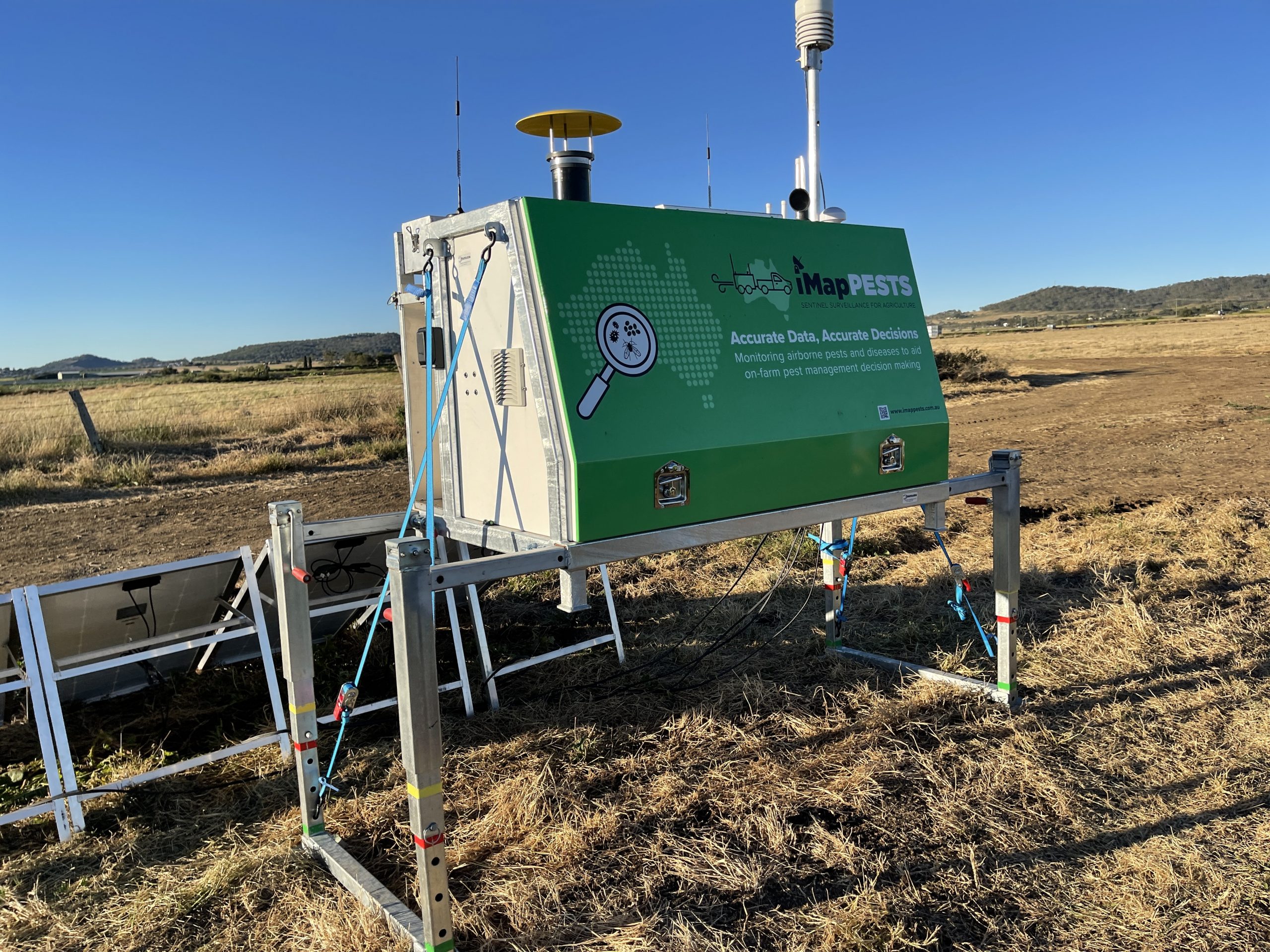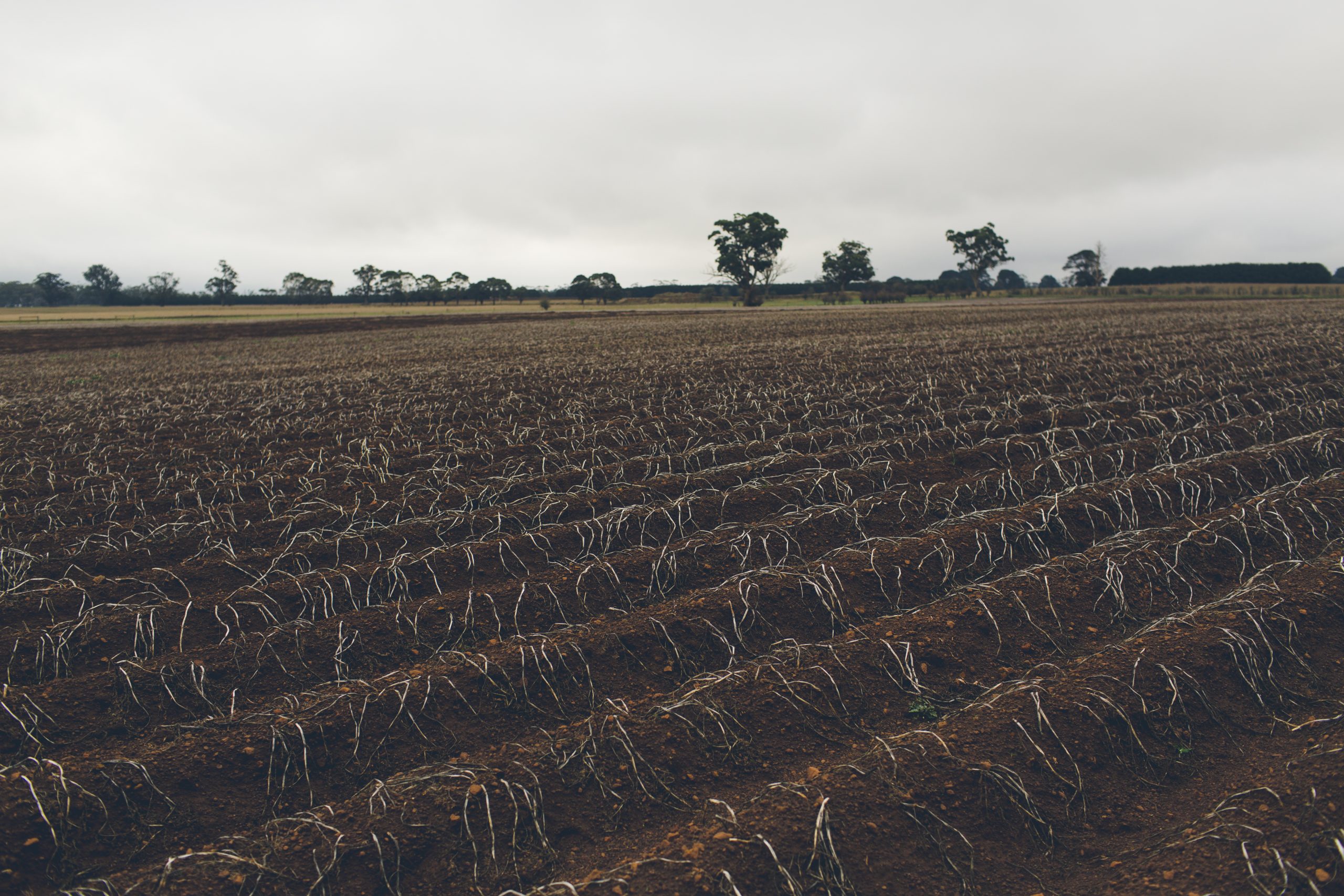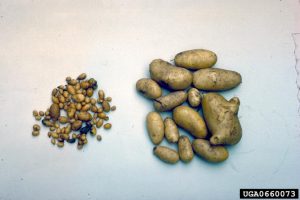
Network of high-tech surveillance units set to cover key potato growing regions
4 October 2021
Energy project leaves Ballarat growers in the dark about their future
5 October 2021Potato spindle tuber viroid (PSTVd) is caused by a small infectious ‘virus-like’ pathogen that takes over the plant cell machinery.
Plant hosts
PSTVd has a significant host range, with the main concerning crop hosts being potato, tomato, capsicum and eggplant, as well as a variety of solanaceous ornamentals (e.g. chrysanthemum, petunia). Some weeds are also hosts. Symptom-less infections are common in ornamentals and weeds, but this has also been observed in avocado and sweet potato.
International distribution
PSTVd was first detected in potatoes in North America in 1925 and since then the disease has been reported in Asia, Africa, North America, South America, Europe, New Zealand and Australia.
Outbreaks of PSTVd first occurred in Australia in 1908 in potato germplasm collections from New South Wales, Victoria and South Australia, but were successfully eradicated. Since the 1990’s, the disease has been detected in chilli and tomato crops in South Australia, Queensland, New South Wales and Victoria. It is also present in Carnarvon, but not in other parts of Western Australia. All other Australian states have implemented successful eradication programs and are considered free from the disease.
Symptoms
PSTVd can be difficult to detect in potato crops as the disease can present a range of mild or severe symptoms, which are further influenced by host species and plant stage of development. Nonetheless, PSTVd can reduce potato yields by 10 to 60 per cent, depending on the severity of the symptoms.
In severe cases, aboveground parts of plants show disease symptoms. These symptoms include upright stems as opposed to healthy plants with horizontal stems (see Image 1), increased stem distance between leaves (internode length), and thinner stems. Leaflets are smaller in size, with leaf surfaces twisting or wrinkling. In severe cases, tubers are often smaller, elongated with pointed ends (spindle-shaped), have cracked surfaces and some eyes may develop knobs that develop into small tubers (see Images 2 and 3).
In mild cases, the aboveground parts of the plant appear similar to plants with nutrient imbalances, spray damage, insect damage or other diseases (e.g. true viruses such as Potato virus Y). Tubers are not obviously elongated or small.
Disease severity and symptoms can worsen in warm and high light conditions and will increase with each generation.

PSTVd tuber symptoms – reduced size and yield of infected potato tubers (left) compared to healthy tubers (right).
Domestic trade impacts
PSTVd is a notifiable plant disease and controlled movement of seed potatoes is used to mitigate the risks of spreading the disease further. Victoria, New South Wales and South Australia have adopted practices of controlled movement of potato propagative material into seed potato protected areas. Only plant material either under a certification scheme or grown in an area of freedom from PSTVd can be moved into these seed potato protected areas.
Disease spread
PSTVd is highly contagious. It is mainly spread via:
- Contact with infected plant material.
- Infected tubers and other vegetatively propagated material, true botanical seeds or pollen.
- Aphids (though this is rare).
Infected plant material, as well as equipment, tools, people, clothing and shoes that have come in contact with infected plant material can act as permanent sources of disease. This is the most likely method of transmission in Australia.
Low rates of transmission through aphids have been observed. In New Zealand, the aphid species Myzus persicae can carry PSTVd to new plants only when the original plant is also infected with potato leafroll virus (PLRV).

PSTVd symptoms on potato tubers. An uninfected tuber (left) and two spindle-like PSTVd infected tubers (right). Image courtesy of the National Plant Protection Organization, the Netherlands, Bugwood.org.
Australia’s biosecurity continuum
Australia has strict pre- and post-border import conditions for nursery stock to limit introducing harmful plant pests and diseases (including PSTVd) to Australia. However, everyone – from importers and growers to the general public – has a role to play in Australia’s biosecurity system. It is important to remain vigilant and practice good farm hygiene to reduce the risk of introducing this disease to your property.
Disease management
Practicing good farm hygiene is the most effective management against PSTVd. There are several biosecurity practices that you can implement to reduce the likelihood of introducing PSTVd onto your property:
- Ensure you are buying seed potatoes from reputable suppliers that are certified free of PSTVd.
- Ensure there is traceability on any seed supplies purchased and used.
- Regularly clean and sanitise equipment, tools, clothes, and boots, especially if cutting seed.
- Control insects, especially aphids and chewing insects.
- Inspect and remove diseased plants.
- Monitor your crop carefully and regularly.
Find out more
Any unusual plant pest should be reported immediately to the relevant state or territory agriculture agency through the Exotic Plant Pest Hotline (1800 084 881).
For further information, please contact the AUSVEG Extension & Engagement Team on 03 9882 0277 or email science@ausveg.com.au. The Farm Biosecurity Program is funded by the Plant Health Levy.
Cover image: A potato plant infected with PSTVd (middle) next to two healthy plants. Typical aboveground plant material symptoms of PSTVd infection. Image courtesy of R.P. Singh, Bugwood.org.

